Review: 2012 Volkswagen Eos
Thirteen years after the Mercedes-Benz SLK reintroduced the hard top convertible, the novelty has once again begun to wear off in the face of concerns about cost, complexity, and curb weight. Even high-end manufacturers like Audi, BMW, and Jaguar have fit their latest convertibles with soft tops (albeit multi-layered ones to retain heat and keep out noise). In other words, the retractable hard top has not rendered ye olde ragtop obsolete. This isn’t to say that the retractable hard top is pointless, at least not when innovatively executed. The recently updated Volkswagen Eos remains the best. But would you want one?
The Eos’s exterior styling remains consistent with the VW brand. Meaning it’s much more clean and functional than drop-dead gorgeous. The revised, de-chromed nose is more generic, but an improvement nonetheless. The top’s novel configuration avoids the poorly located side rail seams that mar the appearance of the otherwise more stylish Volvo C70. Inside, the Eos is similarly very VW, with an instrument panel similar to other compact Euro-market VWs. So clean and solidly-constructed, but nothing flashy or notably luxurious.
As in a number of other VWs and Audis, the driver’s seat is firm and supportive, but is not especially comfortable despite the inclusion of a four-way power lumbar adjustment. You’ll find a far better seat in a Volvo. Visibility is pretty good in all directions. The rear seat is just roomy enough for the average adult male to side behind another such male. If either person is six-plus-feet-tall, though, the fit is going to be tight.
The top is truly the big story. If you’re not interested in it, then you’re not interested in the Eos. VW’s key innovation: separating the center panel from the side rails. This enables a number of unique advantages:
- A superior exterior appearance when the top is up, as noted above. The separated side rails can stow to each side of the rear seat, so they can be longer than a one-piece center panel could be.
- An extra-wide rail-to-rail fully functional glass sunroof within the retractable hard top. So you can get some light in the car even with the roof up. Or, to get a little air in the car without fully opening the roof, vent or open the sunroof.
- A compact retracted roof, in sharp contrast to the much simpler roof of the late, unlamented Pontiac G6 hard top convertible. Even with the top down there’s enough room in the trunk for my usual weekly grocery run. With the top up, trunk space expands from 6.6 to 10.5 cubic feet. And there’s a pass-through to the rear seat for long objects in either configuration.
You simply cannot buy any other car with a roof this versatile. VW even includes a standard wind blocker that covers the rear seat to enable comfortable top-down driving on cool days, and that easily fits in the trunk when not in use.
Of course, the roof also has downsides. The first: with so many motorized pieces, it’s extremely complex. While my sons were highly entertained by the top’s “transformer” effect when in transition, the reliability survey conductor in me must wonder how durable this mechanism will be, and how much it would cost to fix if it did break. Even with the nearly new tested car the top proved finicky. On cold mornings it visibly shook and audibly creaked while traversing patchy pavement. (To keep the seals supple, regularly apply Krytox GPL lube, which runs $50 for two ounces.) Get the trunk’s cargo separator just a bit out of place, and the top won’t go down. Other times the windows wouldn’t move up or down in response to my initial request. And once the windows started rapidly going up and down a fraction of an inch, as they do whenever a front door is opened.
The second downside: curb weight. Tipping the scales just north of 3,500 pounds, the Eos is over 400 pounds heavier than a GTI. So VW’s ubiquitous 200-horsepower 2.0-liter turbocharged four-cylinder engine feels a bit soft off the line and more laggy at middling speeds. Unlike some these days, you can tell it’s a turbo. Once boost is up, though, the 2.0T moves the Eos forward more than well enough given the car’s typical cruising mission. You don’t have to rev the engine, given its plump midrange. If you want to do so anyway, the mandatory ultra-quick-shifting DSG dual-clutch automated manual transmission is eager to assist. Manual mode works via the lever; there are no shift paddles.
The extra curb weight appears to have cut two-to-three MPG from the Eos’s rated fuel economy, 22/30 vs. 24/33 for the GTI. In suburban driving the trip computer reported from 23 to 26, depending on my driving style. Not bad numbers for a four-seat turbocharged convertible.
In casual driving the Eos feels taut, sporty, almost agile, and much more enjoyable than a Chrysler 200 (the only other hard top four-seat convertible with a price in the mid-thirties). The VW’s steering provides little feedback, but it’s quick and nicely weighted. Drive the Eos as you might a GTI, though, and it lapses into a clumsy plow as its higher center of gravity (especially with the top up) and extra pounds overwhelm the capabilities of the suspension and 235/45HR17 Goodyear Eagle LS tires. The tires do contribute to a generally smooth, quiet ride.
The final downside of the complicated top: price. At $34,765 in its base trim with no options, the Eos lists for $6,950 more than a GTI with DSG and the Sunroof and Convenience Package. Aside from the retractable hard top, the feature level is very similar (according to TrueDelta’s Car Price Comparison Tool), so you’re paying about seven large for the top (in addition to the cost of a sunroof, which is included in the GTI as configured). Not that you’ll do better elsewhere. A Chrysler 200 Limited hard top convertible costs about the same, while a Volvo C70 lists for $6,000 more.
The Volkwagen Eos doesn’t handle like a sports car, or even like a hot hatch. Its styling doesn’t suggest otherwise. But some people are merely seeking a solid, sensible, livable car with a versatile roof that lets them enjoy the sun and fresh air to the maximum extent the weather permits. For this mission, the Eos serves best.
Volkswagen provided the vehicle, insurance and one tank of gas for this review.
Michael Karesh operates TrueDelta, an online source of automotive pricing and reliability data.
Michael Karesh lives in West Bloomfield, Michigan, with his wife and three children. In 2003 he received a Ph.D. from the University of Chicago. While in Chicago he worked at the National Opinion Research Center, a leader in the field of survey research. For his doctoral thesis, he spent a year-and-a-half inside an automaker studying how and how well it understood consumers when developing new products. While pursuing the degree he taught consumer behavior and product development at Oakland University. Since 1999, he has contributed auto reviews to Epinions, where he is currently one of two people in charge of the autos section. Since earning the degree he has continued to care for his children (school, gymnastics, tae-kwan-do...) and write reviews for Epinions and, more recently, The Truth About Cars while developing TrueDelta, a vehicle reliability and price comparison site.
More by Michael Karesh
Latest Car Reviews
Read moreLatest Product Reviews
Read moreRecent Comments
- Lou_BC Gotta fix that formatting problem. What a pile of bullsh!t. Are longer posts costing TTAC money? FOOK
- Lou_BC 1.Honda: 6,334,825 vehicles potentially affected2.Ford: 6,152,6143.Kia America: 3,110,4474.Chrysler: 2,732,3985.General Motors: 2,021,0336.Nissan North America: 1,804,4437.Mercedes-Benz USA: 478,1738.Volkswagen Group of America: 453,7639.BMW of North America: 340,24910.Daimler Trucks North America: 261,959
- MaintenanceCosts If you're buying your car to drive on some of the longer tracks, or if you're going drag racing, with street driving on the side, then maybe a very high-power engine option like this is worthwhile for you. If you're buying your car to drive on the street, and don't drive on a track, it's hard to see the benefit. The envelope of a Z06 goes way beyond anything you need on the street and the additional capability of a ZR1 is not useful at all.
- MaintenanceCosts Thanks to a combination of aging product and its CEO's erratic and often embarrassing conduct, Tesla's brand has gone from "can do no wrong" to "the embarrassing thing you have to put up with to have an affordable EV." People are accordingly less forgiving.
- Jalop1991 Great question. Why not make a track-only car. I'm sure some would say, they want the ability to drive the car to the track. But this brings up another thought: I keep hearing, right here even, about how "EVs are so much better, they're silent on the road, and they have INSTANT POWER and huge acceleration". Do we need EVs to behave that way any more than we need 1000 bhp road cars? Do we need to put go pedal behavior like that under the feet of new drivers? Of your mother? Of 35 year old Tiffany as she stares at her iPhone in traffic?



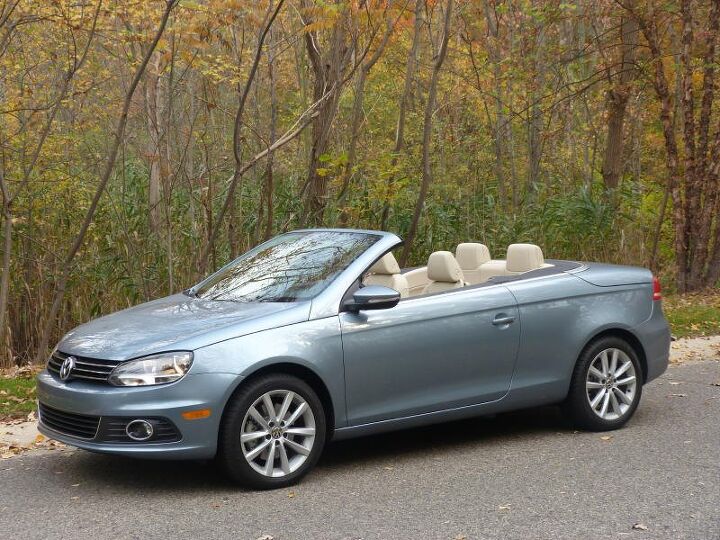






























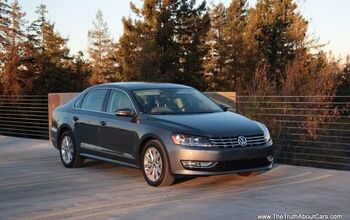
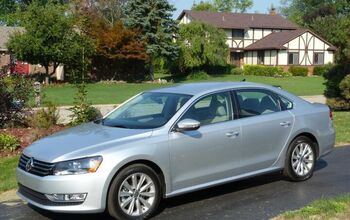
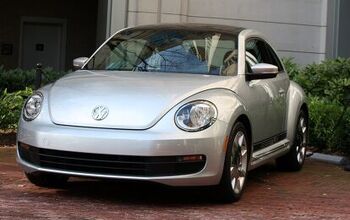
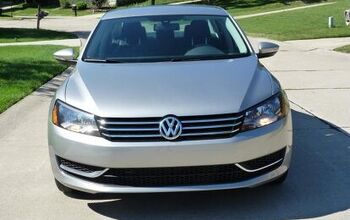
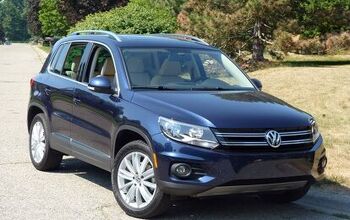


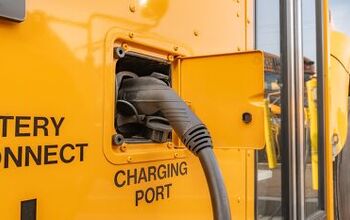

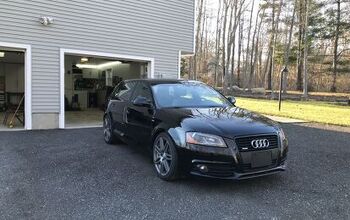



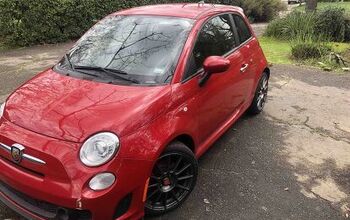
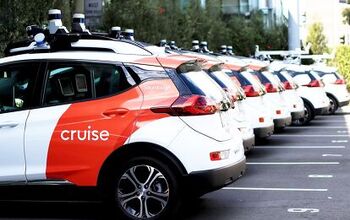
Comments
Join the conversation
I have a friend with a 1991 Mercedes 500SL that has over 300,000 km on it at this very moment. According to him the roof-mechanism needs alignment fine-tuning every 50,000 km (depending on usage) but the system has never failed him. A few years ago I was actually considering a 1st generation Mercedes SLK320 but it turned out to small for me. However, upon doing research on the reliability aspect of the car, I found that the foldable roof systems were quite reliable and only needed alignment fine-tuning every 50,000 km depending on usage - just like with the old 500SL of the early 1990s.
OK...I own this car. Practical, no...but who buys a convertible to be practical? So, if you are looking for a family car, or for a car to road trip across the country in, this is not for you. Fun, yes. Fun to drive and it's a great drop top. I live in Virginia and have the top up all winter. The hard top is about the same as having a coupe. So yes, I like this car. That being said, the top is a mechanical...well, challenge. I actually took it into the VW dealer today because I went to put the top down for the first time this year and it didn't go down...looks like a hydraulic pump. So, my suggestion, if you want a hard top drop top this is a pretty good car for the money. Do like I did and spend the extra $500 to get the 7 year 70,000 mile coverage. If this is your only mode of transportation, go with an SUV or a minivan...this car is for fun!!!